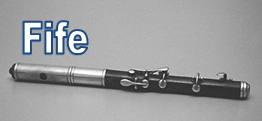Sloppy Typing
If you’re anything like me, you sometimes get “fat-fingers” when typing; When aiming for a particular letter key, you miss it and hit one of the key’s neighbors instead. (It’s especially easy to do on mobile devices with their tiny keyboards).
 |
Often the resulting word is garbagd <- See what I did there? But sometimes the bogus letter results in the creation of a different, legitimately spelled, word. For instance, if I was trying to type the word FOOD, and my finger slipped on the first letter and landed just to the right, I’d end up typing GOOD. Taken to the limit, if I missed every letter in the word FOOD by one key, I could spell the word GILE, or BIKE or TIPS … plus many others. In total, it’s possible to make 68 English words whilst trying to type FOOD (if you also include words where sometimes you hit the correct letter in the correct place!) |
|
Using the database of words I compiled for the Hangman Analysis, I ran a query to select all the words that could be created by taking a word and attempting to substitute each letter in the word with any of the letters surrounding it on a QWERTY keyboard (plus the correct letter itself). Out of the 172,806 words in the dictionary file I used, a total of 88,669 (51.3%) words can make other words with the replacement of one or more letters with their touching neighbors. |
 |
Atomic Typos
Editors classify these kinds of typo (typography) errors as atomic errors because they are not found by basic spell-checking software. Often they are very simple small ‘atomic’ level errors, but they have a potential to make big changes to the meaning of sentences. (There are other types of atomic errors not covered by this article, such as the unintentional switching of adjacent letters in a word e.g. a transposition that changes UNCLEAR into NUCLEAR.
 |
The English word that can make the most number of additional words by adjacent miskeys is: FIFE. Mistypes of this word can form another 199 legitimately spelled words: (A high-pitched transverse flute used commonly in military and marching musical groups.) |
BIBS, BICE, BIDE, BIDS, BIER, BIFF, BIGS, BIRD, BIRR, BITE, BITS, BLED, BLEW, BOBS, BODE, BODS, BOFF, BOGS, BORE, BOTS, BUBS, BUDS, BUFF, BUGS, BURD, BURR, BURS, BUTE, BUTS, CIRE, CITE, CLEF, CLEW, COBS, CODE, CODS, COED, COFF, COGS, CORD, CORE, CORF, COTE, COTS, COVE, CUBE, CUBS, CUDS, CUED, CUES, CUFF, CURD, CURE, CURF, CURR, CURS, CUTE, CUTS, DIBS, DICE, DIED, DIES, DIGS, DIRE, DITE, DITS, DIVE, DOCS, DOER, DOES, DOFF, DOGE, DOGS, DORE, DORR, DORS, DOTE, DOTS, DOVE, DUBS, DUCE, DUDE, DUDS, DUES, DUFF, DUGS, DURE, DURR, EIDE, EKED, EKES, ELDS, FIBS, FICE, FIDS, FIEF, FIGS, FIRE, FIRS, FITS, FIVE, FLED, FLEE, FLEW, FOBS, FOES, FOGS, FORD, FORE, FUBS, FUDS, FUGS, FURS, GIBE, GIBS, GIDS, GIED, GIES, GIGS, GIRD, GITS, GIVE, GLED, GLEE, GOBS, GODS, GOER, GOES, GORE, GUDE, GUFF, GUTS, GUVS, RIBS, RICE, RIDE, RIDS, RIFE, RIFF, RIFS, RIGS, RITE, RIVE, ROBE, ROBS, ROCS, RODE, RODS, ROES, ROTE, ROTS, ROVE, RUBE, RUBS, RUDD, RUDE, RUED, RUER, RUES, RUFF, RUGS, RUTS, TICS, TIDE, TIED, TIER, TIES, TIFF, TIRE, TITS, TODS, TOED, TOES, TOFF, TOGS, TORE, TORR, TORS, TOTE, TOTS, TUBE, TUBS, TUFF, TUGS, TURD, TURF, TUTS, VIBE, VICE, VIDE, VIED, VIER, VIES, VIEW, VIGS, VIVE, VOES, VOTE, VUGS.
Here are the top 25 words with the highest number of stumbled words:
|

|
Most frequently switched letters
Not all letter transpositions are equal. Some switches, because of the nature of our language, occur more frequently than others. Also, keys that are in the middle of the keyboard, such as the letter D, have eight nearest neighbors. Others, such as the letter Q, are tucked away in the corner with only three neighbors (as well as being less common letters).
It’s far from scientific, because the database of words I am using is not normalized based on frequency of everyday usage (but then again, we’re looking for the chance a slip will make a legitimate word and make an atomic error, no matter how obscure the newly created word is). Below is a table showing the count of each two-letter transposition if it contributed to making another legal word in the dictionary file.

The highest occurring ‘successful’ switch occurs when the letters O and I are transposed. This is probably not too surprising; two vowels situated next to each other. There are many words where these two vowels can be switched. As regards consonant switching, the two switches most likely to make new words are S and D.
Overall, looking at the most ‘dangerous’ letter to miss (the one most likely to cause an atomic typo), is the letter S, followed by D, R, E and I. Interestingly, the majority of the high-potential typo letters are on the left of the keyboard (though more people are right-handed).
The ‘safest’ letter is Q (being uncommon and in the top corner), followed by Z, J, X, Y and V.
You can find a complete list of all the articles here. Click here to receive email alerts on new articles.
Click here to receive email alerts on new articles.

